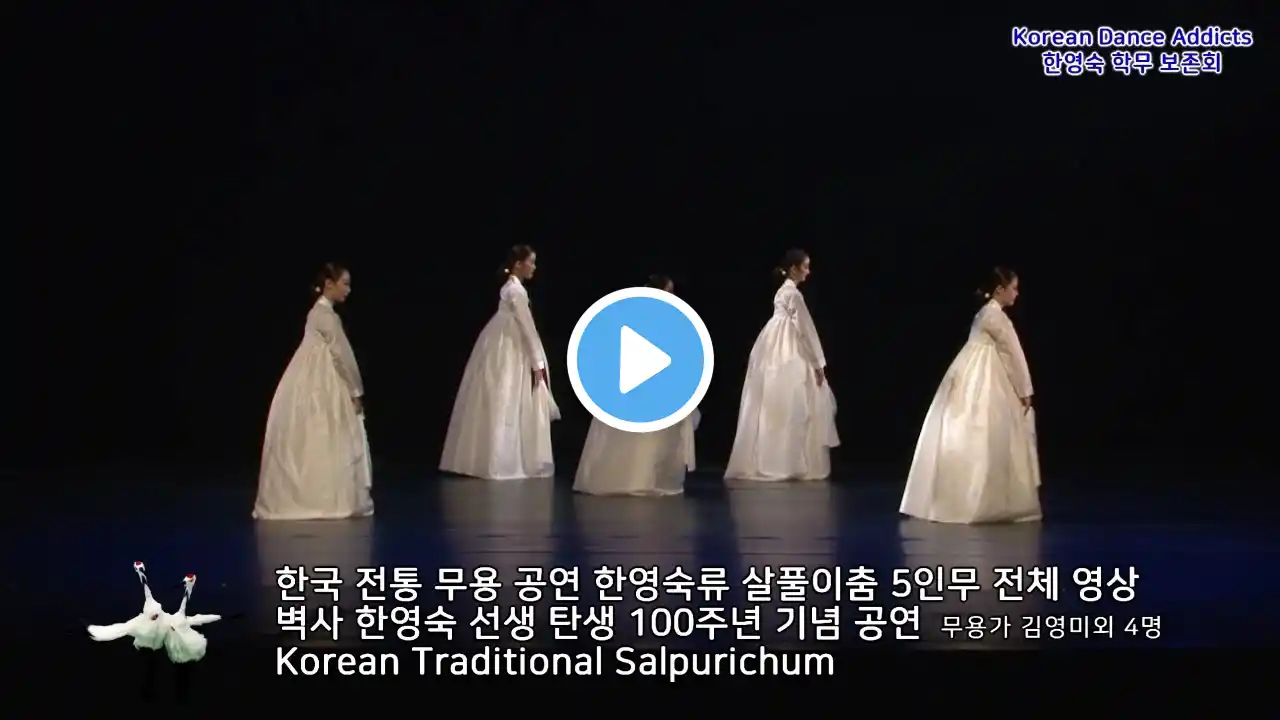
Korean Traditional Salpurichum, Culture dance performance
Korean Traditional Salpurichum, Culture dance performance Salpuri is one of the Korean folk dances. The word Salpuri literally means "to drive out evil spirits". It was a one-woman dance performed by gisaengs in gisaeng houses(a kind of old bar) in old times. It is Important Intangible Cultural Property No. 97. From ancient times, people in our country gathered in one place and held meetings to solve their sorrows and evils by dancing and singing. There, shamans performed spiritual dances as deities and people danced to release their sorrows and evils. They dance together and the fun was over after reaching its peak. Then people would go back to their daily lives and get new life. The origin of the Salpuri dance began with with this tradition. The term "salpulchum" first appeared in a book titled "Joseon Beauty Bogam," published in 1918. In the book, "Salpuri is a folk dance in the southern part of the country, while Garak is a mournful tune in Jeolla Province." Salpuri dance became common in the early 20th century when Han Seong-jun, who was called the father of Korean traditional dance, used the name "Salpuri Dance" during a dance presentation in 1935 at Bumingwan. Salpuri dances vary in composition from dancer to dancer.



















